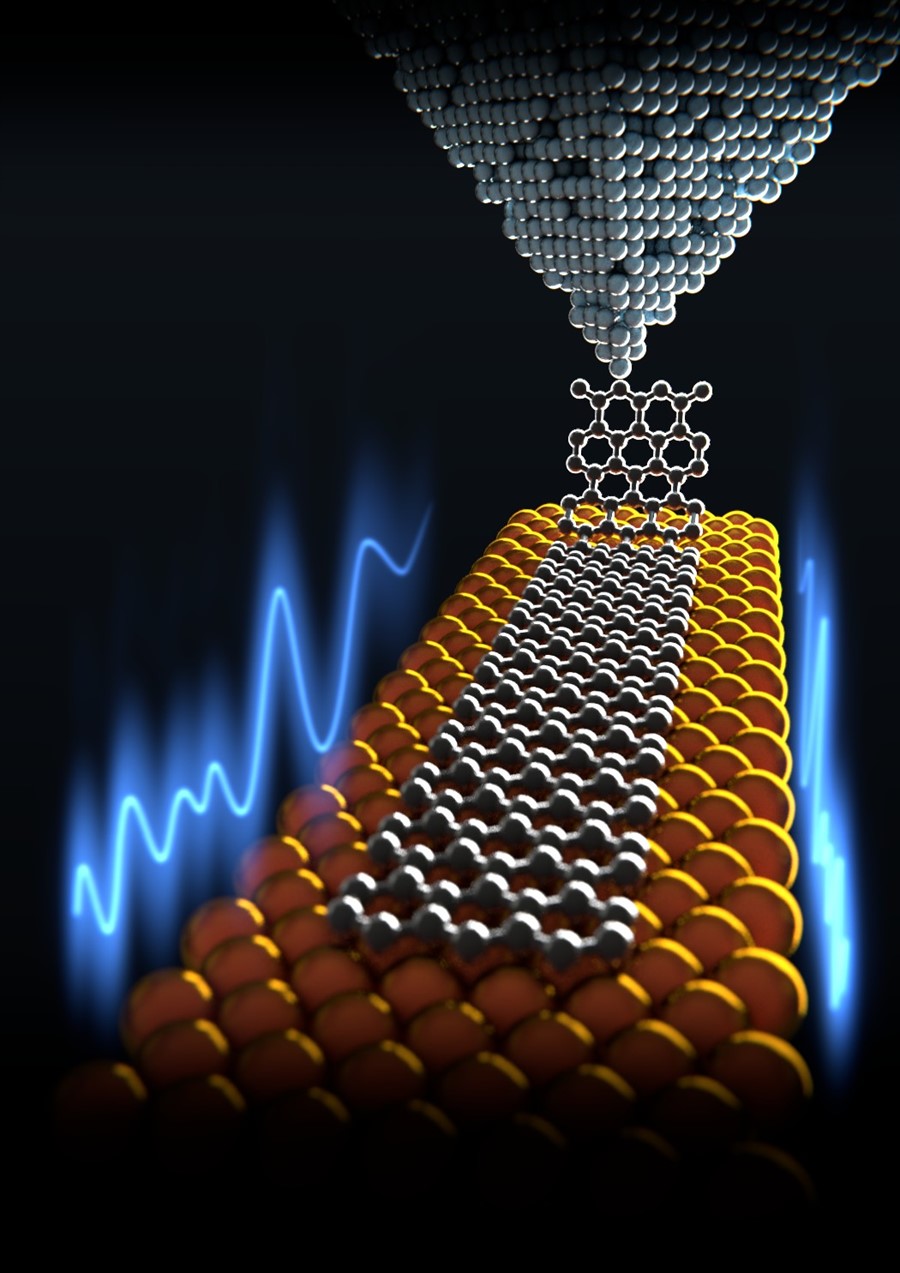Frictionless Graphene
In the first study of its kind, researchers from the Graphene Flagship show that the same ultra-low friction that is well known to occur between sheets of graphene also occurs between graphene and other surfaces. The work, published in Science (1), and led by physicists at the Max Planck Institute for Polymer Research at Mainz (Prof. Klaus Müllen), the Technical University Dresden (Dr. Andrea Benassi, Prof. Xinliang Feng), EMPA Zurich (Prof. Roman Fasel) and the University of Basel (Prof. Ernst Meyer) opens up the possibility of frictionless coatings.
The benefits of frictionless coatings, which would result in almost zero energy loss between mechanical parts, improving energy efficiency and extending the service life of equipment should not be underestimated.
Graphene: a superlubricator
To better understand the above-average lubricity of graphene the researchers used a two-pronged approach combining experimentation and computation. To do this, they anchored two-dimensional strips of carbon atoms (so-called graphene nanoribbons) to a sharp tip and dragged them across a gold surface. Computer-based calculations were then used to model the interactions between the gold and graphene surfaces as they moved across one another.
The experiments revealed almost perfect, frictionless movement. It is possible to move graphene nanoribbons with a length of 5 to 50 nanometers using extremely small forces (2 to 200 piconewtons). There is a high degree of consistency between the experimental observations and the computer simulation, allowing for a better understanding of this superlubricity behaviour of graphene.
A discrepancy between the model and experiment appears only when the distance between the measuring tip and the gold surface is at greater than five nanometers, explained by the researchers as probably due to the edges of the graphene nanoribbons being saturated with hydrogen, which was not accounted for in the simulations.
By studying the graphene nanoribbons, the researchers hoped to learn about more than just the slip behaviour. Measuring the mechanical properties of graphene also offers excellent potential for a whole range of applications in the field of coatings and micromechanical switches. In the future, even electronic switches could be replaced by nanomechanical switches, which would use less energy for switching on and off than conventional transistors.
"Our results help us to better understand the manipulation of chemicals at the nano level and pave the way for creating frictionless coatings," write the researchers.
(1) Shigeki Kawai, et al., Superlubricity of graphene nanoribbons on gold surfaces. Science., Vol. 351, Issue 6276, pp. 957-961 (2016).
Credit: University of Basel, Department of Physics.
This article was altered by Siân Fogden for the Graphene Flagship from a TU Dresden Press Release.

A graphene nanoribbon was anchored at the tip of a atomic force microscope and dragged over a gold surface. The observed friction force was extremely low.



